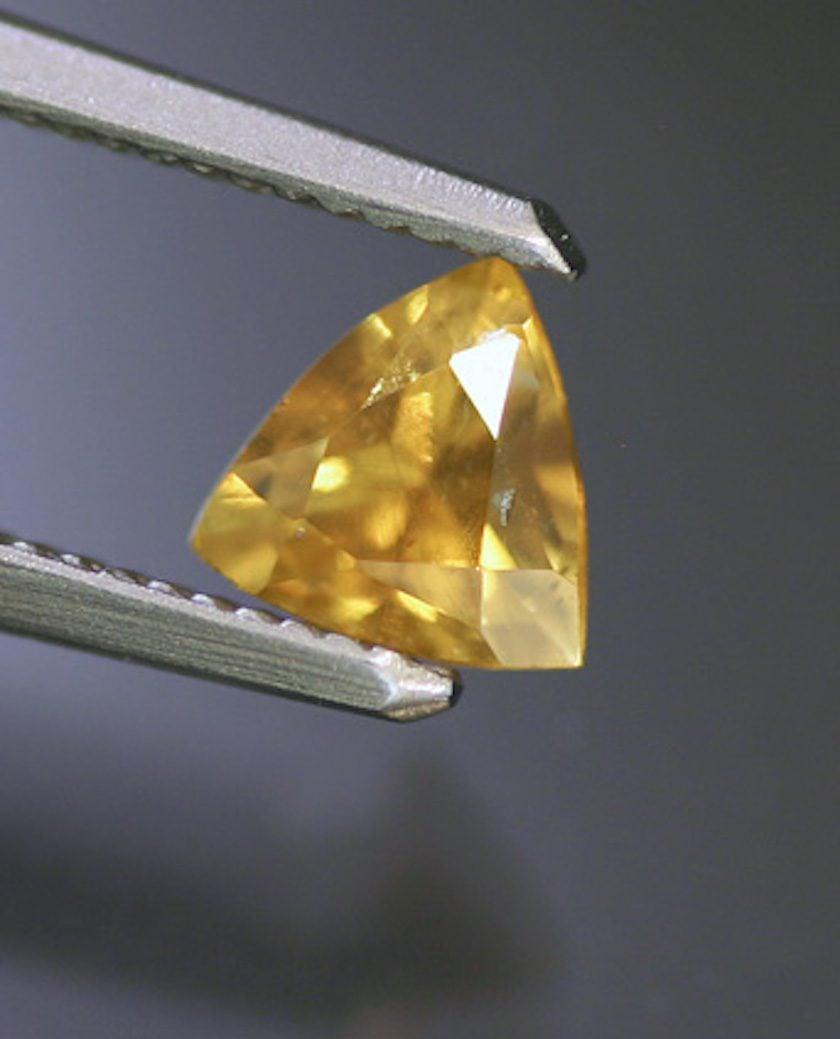Microlite Value, Price, and Jewelry Information
Ranging in color from pale yellow to brown, reddish, and green, microlite cabochons are prized by collectors. Faceted gems are very beautiful but extremely rare.
1 Minute Read
Ranging in color from pale yellow to brown, reddish, and green, microlite cabochons are prized by collectors. Faceted gems are very beautiful but extremely rare.
Start an IGS Membership today
for full access to our price guide (updated monthly).Microlite Price
Comments
As the name suggests, microlite crystals are small. Ranging from translucent to opaque, faceted gems over 4 carats in size would be extremely rare. However, gem carvers can cut massive brownish or reddish material into cabochons up to several inches long.
Microlite belongs to the pyrochlore mineral supergroup and, mineralogically speaking, constitutes a group itself of pyroclores with the element tantalum (Ta) predominant.
Identifying Characteristics
Microlite has a streak color ranging from pale yellow to brown. However, don't conduct streak testing on finished gems. Test material in inconspicuous spots as a last resort only.
Due to radiation exposure during formation, microlites may become metamict, losing their crystalline structure. This metamictization may also cause anomalous double refraction (ADR).
Sources
Brazil produces fine, sometimes gemmy, green crystals.
The Rutherford Mines in Amelia, Virginia also yield green and brown crystals, and gemmy specimens may reach a few inches in length.
Other notable gem-quality sources include the following locations:
- United States: Colorado; Connecticut; Maine; Massachusetts; New Hampshire; South Dakota.
- Western Australia; Finland; France; Greenland; Madagascar; Norway; Sweden.
Stone Sizes
Green Brazilian gems weighing less than 1 carat have appeared on the market, and the potential exists there for larger stones.
Generally, faceted gems weigh under 3 to 4 carats. A garnet-red microlite crystal found in 1885 weighed 4.4 carats in the rough and, when faceted, looked like a red zircon.
- Smithsonian Institution (Washington, D.C): 3.7 (brown, Virginia).
Care
Some microlites may be slightly radioactive due to impurities of rare-earth elements (REE), therefore, faceters should take precautions to avoid inhaling or accidentally ingesting dust from cutting.
Store microlite jewelry and carvings separately from more commonly encountered gemstones, such as garnet, quartz, topaz, etc. With a hardness ranging from 5 to 5.5, microlites can suffer scratches from these harder materials as well as common objects like a steel file, so use protective settings for ring use. To clean, use a soft brush, mild detergent, and warm water. Consult our gemstone jewelry cleaning guide for more recommendations.
Joel E. Arem, Ph.D., FGA
Dr. Joel E. Arem has more than 60 years of experience in the world of gems and minerals. After obtaining his Ph.D. in Mineralogy from Harvard University, he has published numerous books that are still among the most widely used references and guidebooks on crystals, gems and minerals in the world.
Co-founder and President of numerous organizations, Dr. Arem has enjoyed a lifelong career in mineralogy and gemology. He has been a Smithsonian scientist and Curator, a consultant to many well-known companies and institutions, and a prolific author and speaker. Although his main activities have been as a gem cutter and dealer, his focus has always been education. joelarem.com
International Gem Society
Related Articles
Black Diamond Value, Price, and Jewelry Information
Chameleon Diamond Value, Price, and Jewelry Information
Gray Diamond Value, Price, and Jewelry Information
Green Diamond Value, Price, and Jewelry Information
Latest Articles
Milarite Value, Price, and Jewelry Information
Appraising Pearls: How to Grade Pearls
Agate Buying Guide
Carving Techniques for Handling Inclusions in Transparent Gems
Never Stop Learning
When you join the IGS community, you get trusted diamond & gemstone information when you need it.
Get Gemology Insights
Get started with the International Gem Society’s free guide to gemstone identification. Join our weekly newsletter & get a free copy of the Gem ID Checklist!
